It’s Skin Cancer Awareness Month | I’m Sharing My Sun Story

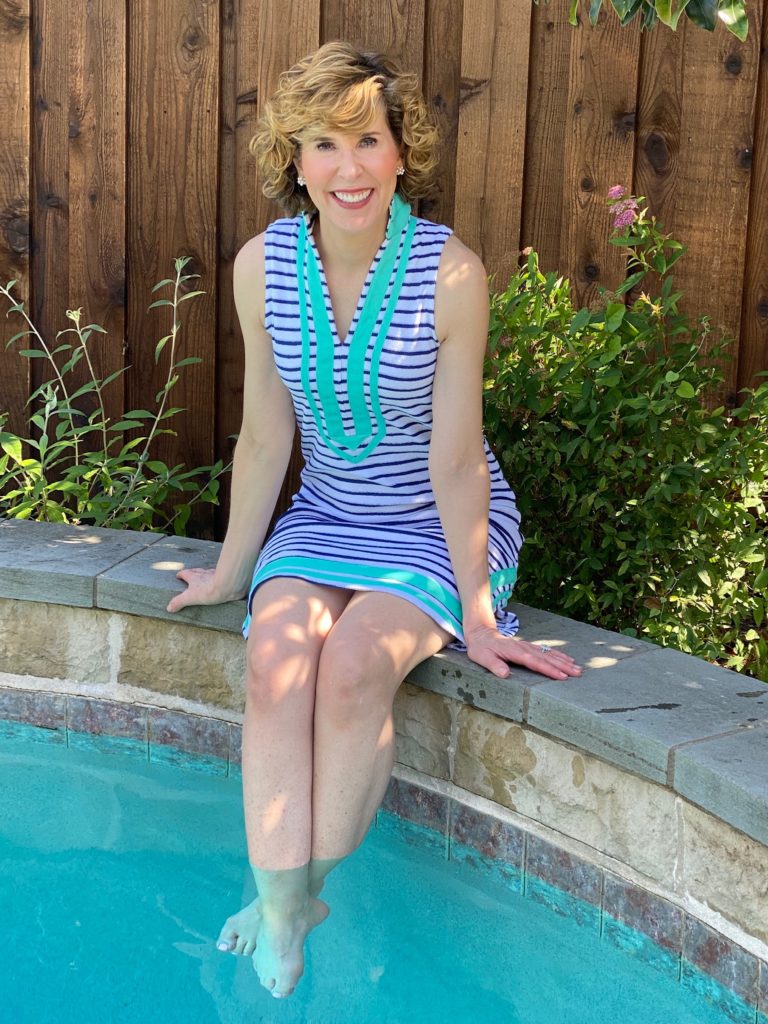
Did you know that 1 in 5 Americans will develop melanoma before age 70? Five million people will be diagnosed with skin cancers this year and one person dies of melanoma every 54 minutes! It’s true.
I’ve never had melanoma, but I go into my dermatologist every single year, let her give me the big strip-naked-once-over, and I hold my breath and pray until she gives me the thumbs up ????????. Here’s the thing: Skin cancer is the one preventable cancer! Why? There’s a direct correlation with ultraviolet radiation exposure. UV radiation causes changes at the cellular DNA level and increases the risk of all types of skin cancer (squamous cell, basal cell, and melanoma).
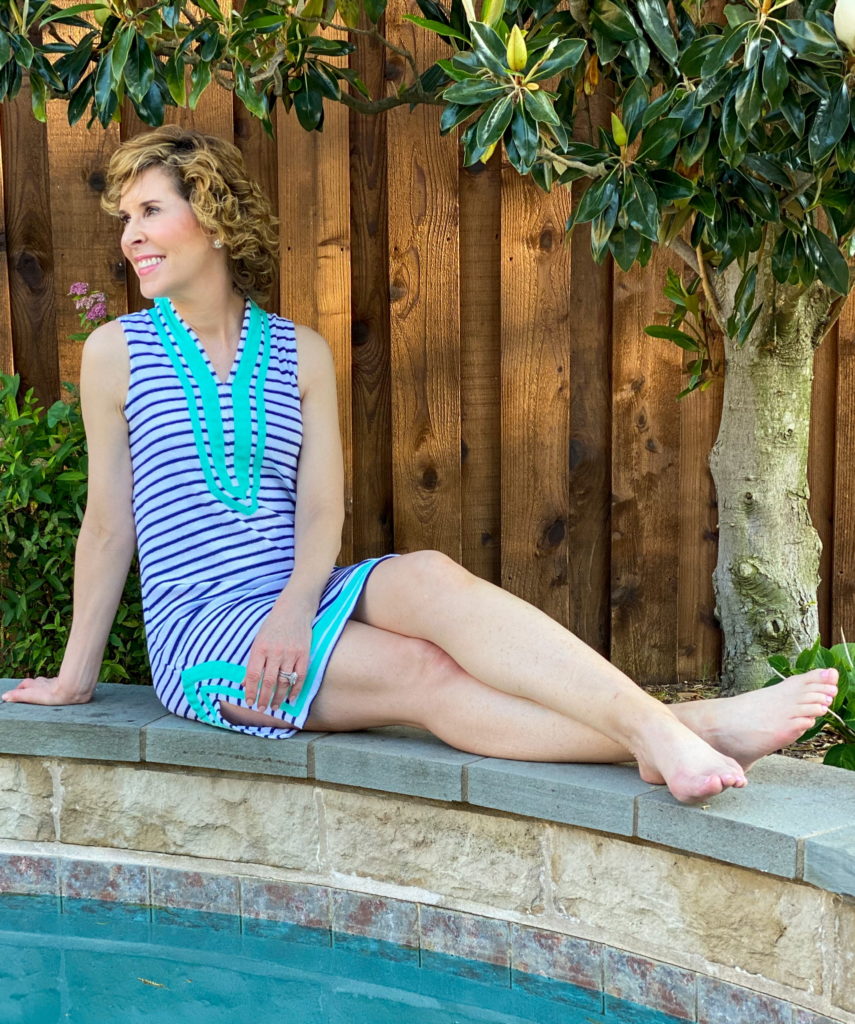
My Sun Story: Lupus
While my sun story isn’t about skin cancer, exposure to the sun’s UV rays do have an alarming effect on my health. As many of you know, I have lupus, a chronic auto-immune disease that causes the systems in my body that usually fight infections to attack healthy tissue instead. This can cause inflammation anywhere from the joints and skin to the internal organs.
Ultraviolet (UV) radiation causes damage to everyone’s cellular DNA, but for those of us with lupus, the cells are much more sensitive to the damage. For most people, once the cells are damaged, the immune system clears them. But for people with lupus, the dead cells stick around in the body, triggering an immune system attack (aka “lupus flare”), and bringing on symptoms like a body-wide prickly rash, fatigue, joint pain, tingling, and numbness.
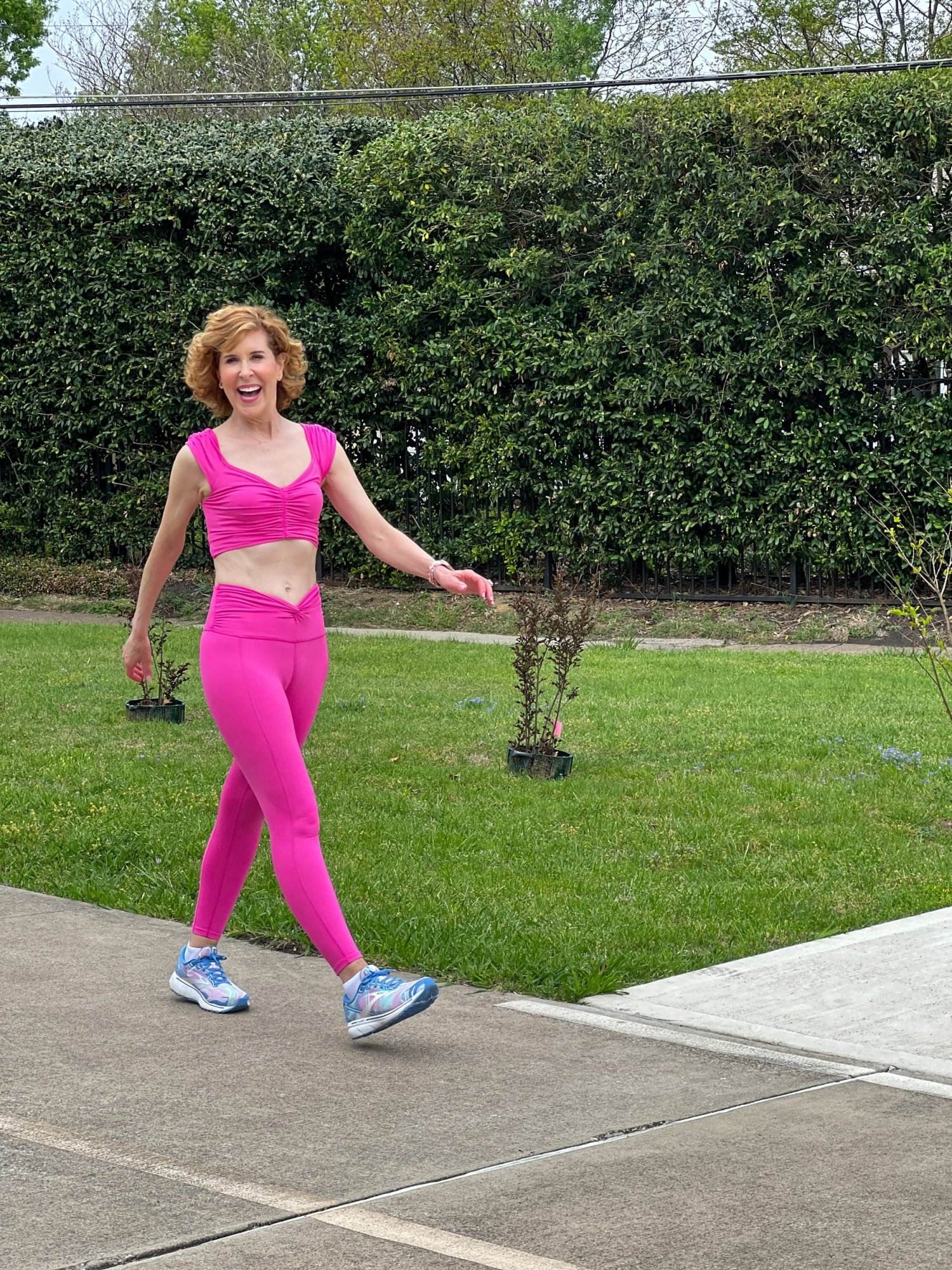
How to Lose Weight
When You’re Over 50
Already a subscriber? Enter your email – you won’t be subscribed twice!
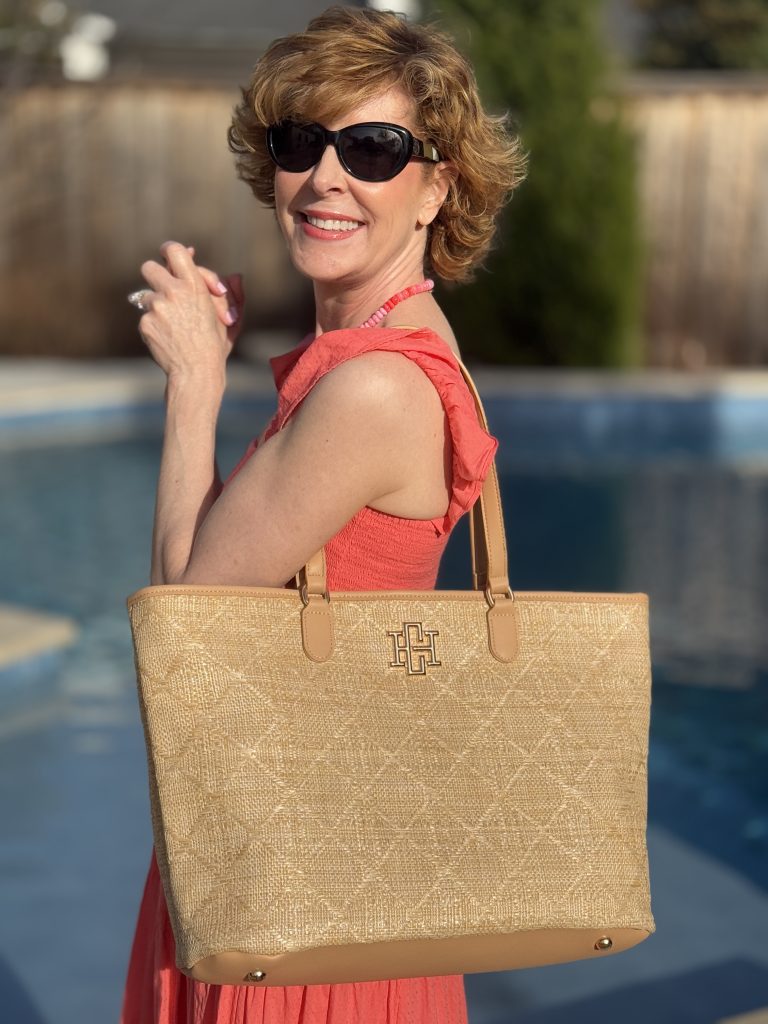
2025 Spring & Summer Style Guide
The Trends You Need To Know
Already a subscriber?
Enter your email—you won’t be
subscribed twice!
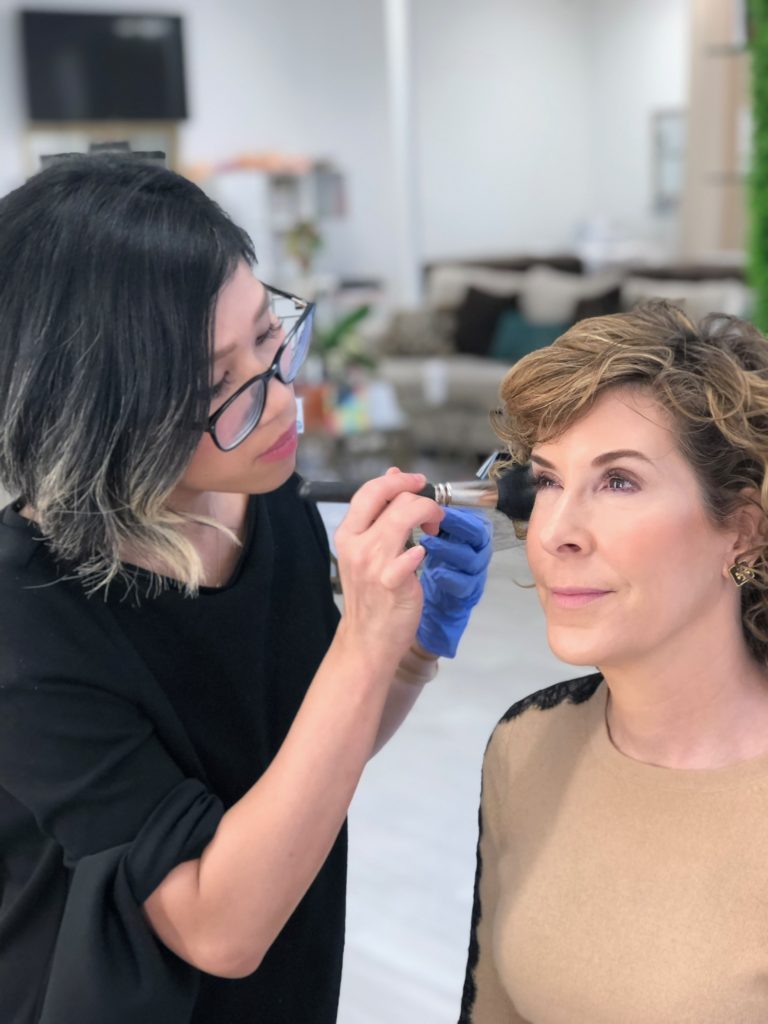
The Midlife Makeup
Mistakes You May Be Making
Plus, How to Fix Them!
Already a subscriber?
Enter your email—you won’t be
subscribed twice!
For someone who loves the beach (and owns a beach condo on an island!), this is not good news????! I have to be extra vigilant with sun protection. Daily use of a broad-spectrum sunscreen is critical, decreases the risk of melanoma by nearly 50%, and is an absolute necessity for people like me who are sun-sensitive.
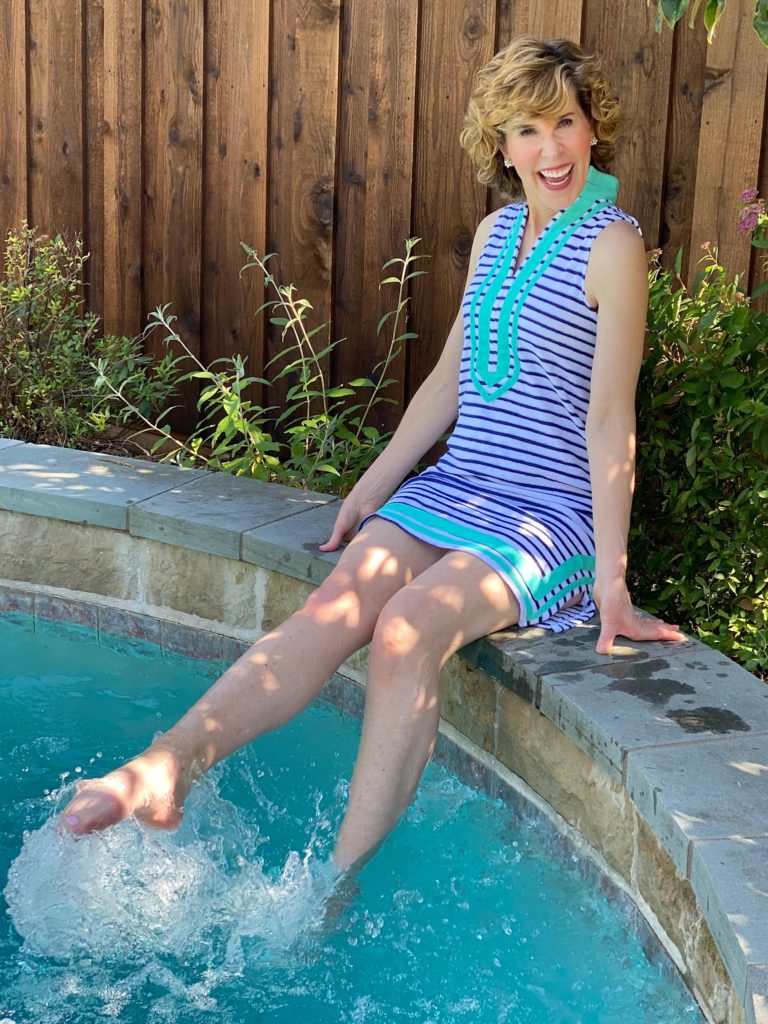
My Sun Story: Sun Safety
Do you know the difference between SPF and UPF? Both SPF and UPF are standards used to measure sunburn protection. SPF is the standard used to measure the effectiveness of sunscreens. It’s been around for many years. The UPF system is used to measure the effectiveness of clothing in blocking UV rays. It’s relatively new and was created especially for sun protective fabrics.
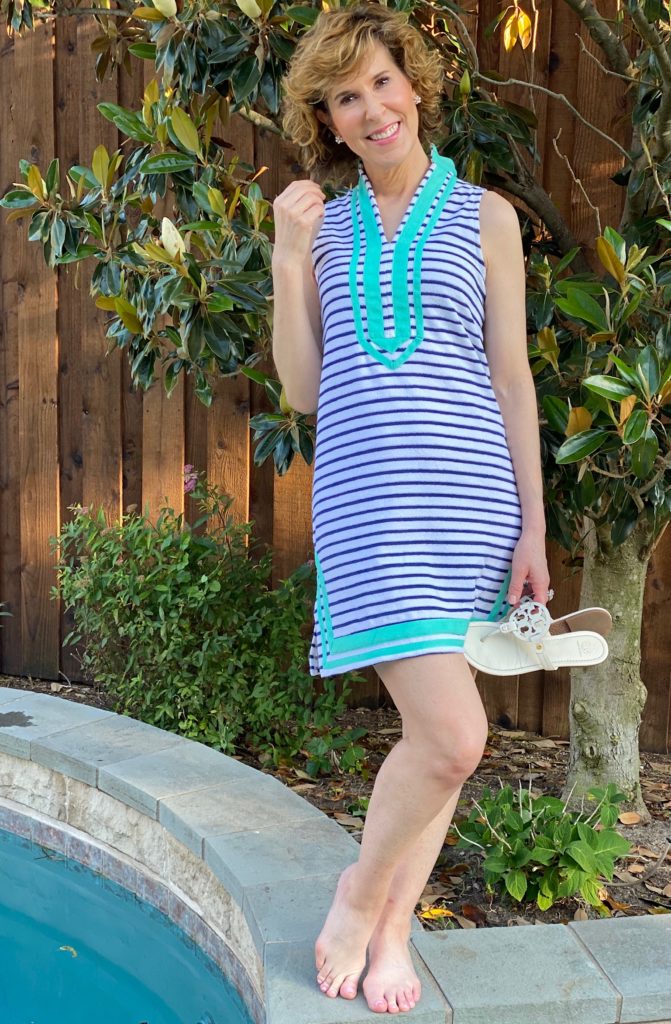
UPF 50+ (gifted) | (dupe ) | |
SPF vs. UPF
SPF stands for Sun Protection Factor. It measures the amount of time it takes for sun-exposed skin to redden. For example, if you burn after 20 minutes, if used correctly, an SPF 15 sunscreen may protect your skin 15 times longer.
UPF stands for Ultraviolet Protection Factor. It measures the amount of UV radiation that penetrates a fabric and reaches the skin. For example, a fabric with a UPF rating of 50 only allows 1/50th of the sun’s UV radiation to pass through it. This means that this fabric will reduce your skin’s UV radiation exposure by 50 times (98% UV block) in areas where the skin is protected by the fabric.
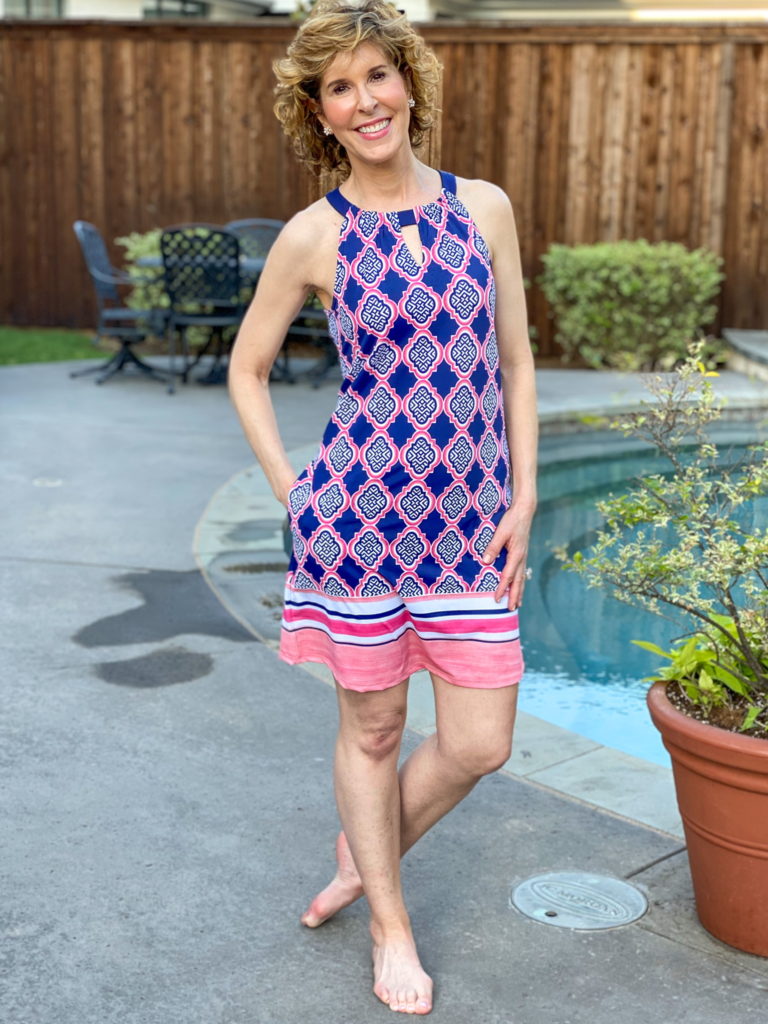
My Sun Story: Sunscreens
When it comes to sunscreen, things can get tricky! Do you go natural, or chemical?????????♀️ In recent years, Consumer Reports has reported disappointing results when testing “natural” sunscreens (aka “mineral sunscreens” with only titanium dioxide or zinc oxide–or both) as UV filters. While we all love the more natural products, with my sun-sensitivity issues, effectiveness is the most important thing when it comes to sunscreen. So I did my research, talked with my doctors, and made a decision to use natural sunscreens primarily when I’m indoors (since UV rays come in windows) and chemical when I’m outdoors.
I use mineral-based sunscreen on any exposed skin every single day. It’s the #1 doctor-recommended sunscreen, and it’s the one my dermatologist recommended. When Consumer Reports tested chemical sunscreens, they found to be most effective, so that’s the one I use when I’m going be outside for any significant time at all. It’s oil-free, non-greasy, Oxybenzone-free, and full of antioxidants. I often layer them! I’ll wear the if I’m at home in the mornings, and add the LaRoche Posay right on top if I go out later in the day!
When it comes to my face, things can get a little trickier! The foundation I use every day has broad-spectrum physical SPF 50+, but it’s full coverage, and I find it a little too heavy for the summer months. So most of the time in the summer, I use Elta MD’s UV Physical Broad-Spectrum SPF 41 on my face in place of foundation. It’s tinted, water-resistant, chemical-free, and full of antioxidants. I top off my facial sunscreen protection throughout the day by using Supergoop’s Defense Refresh Setting Mist. It’s a makeup setting spray that helps control oil and shine while refreshing your UV defense with broad-spectrum SPF 50. Add to that my (it’s seriously the very best), I use this inexpensive lip balm with SPF 20, and SPF 26 blush, and I’m pretty much good to go on a summer day!
Sunscreen Guidelines
Whatever sunscreen you choose to use, be sure to follow these specific guidelines: (Most people don’t! ????)
- Apply way before sun exposure. It takes 20-30 minutes for any type of sunscreen to sink into your skin, providing the protection you need.
- Shake it well before applying to mix ingredients that may have separated between uses.
- Use enough. The QSun app in the app store will help you track the UV index in your area, give you personalized recommendations on how much sunscreen to use, and advise you on balancing your vitamin D intake with sun safety.
- Don’t use a stick or a spray if you can help it. It can be hard to guarantee that enough sunscreen is making it onto your skin, especially if the sunscreen is transparent.
- Reapply. Water-resistant doesn’t mean waterproof! All types of sunscreen – even water-resistant ones – should be reapplied after swimming or excessive sweating, even if it hasn’t been 40 or 80 minutes since you first applied it. If you aren’t sweating, you still need to reapply! Applying sunscreen once in the morning before a day of sun will only offer you about two hours of protection.
- Wear sunscreen even if you’re not outside. The sun emits both wrinkle-causing UVA rays and sun damage-causing UVB rays. If you’re near a window or in your car, the glass will block out most UVB rays, but most UVA rays pass through the glass, putting you at risk.
- Don’t assume a higher SPF means longer protection time! SPF indicates the proportion of UVB rays blocked, not the duration of protection. Sunscreens with higher SPF values block out more UVB rays than sunscreens with lower SPF values, but they don’t last longer.
- Check the expiration date. If you use a sunscreen that’s past its expiration date, you may not get adequate protection. According to the Mayo Clinic, sunscreen that doesn’t have an expiration date should be replaced after 3 years.
- Put sunscreen everywhere! Use the BEENS acronym to help you to remember to cover these commonly missed spots: back of the knees, ears, eye area, neck, and scalp. Also, don’t forget your , hands, and feet.
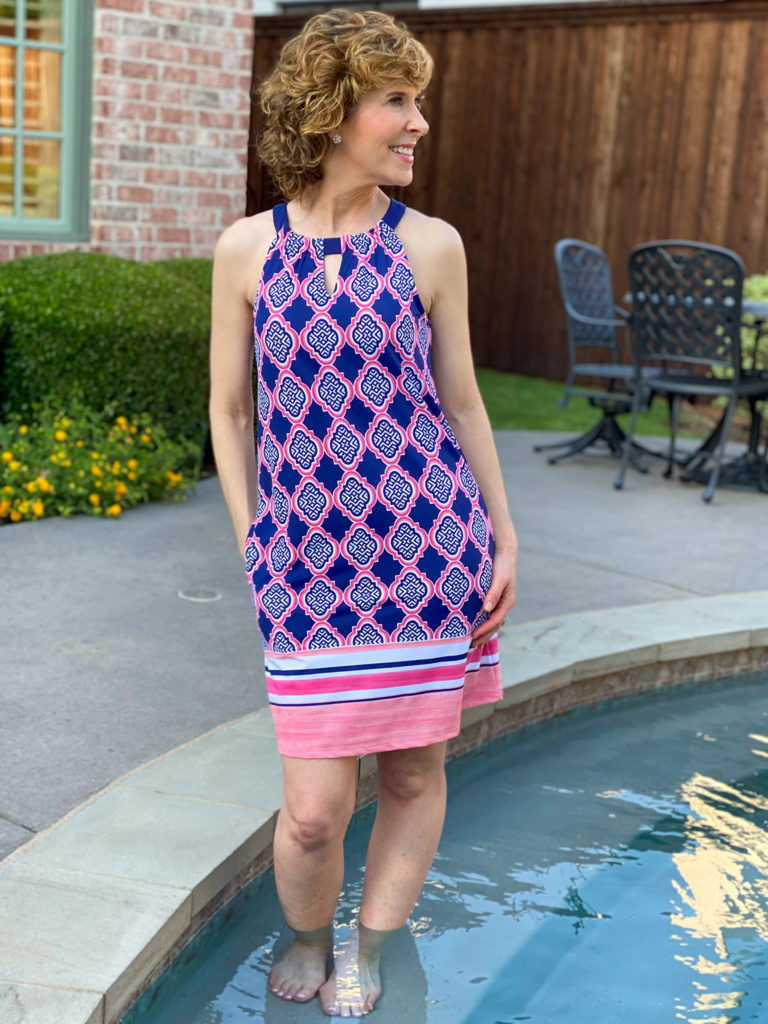
My Sun Story: Sunglasses
You may not know it, but your eyes are susceptible to UV damage as well! Over time, the cumulative effects of UV radiation may cause cataracts. According to Health, selecting shades that offer 100-percent UV protection from both UVA and UVB rays is the most important thing you can do to protect your eyes. (BTW, contrary to popular belief, polarized lenses don’t offer any actual sun protection. All they do is reduce glare and keep you from squinting. To protect you from harmful UV rays, polarized lenses need to be combined with a UV-blocking substance.
UPF Sunglasses Options
- Buy frames from somewhere like (try on up to 5 pairs at home for free!) or download the Warby Parker app and try them on virtually. They include 100% UVA and UVB protection with every pair at no additional charge.
- If you wear contacts, ask your eye doctor if the ones he’s prescribed have UV protection. I use Acuvue brand, which have the highest levels of UV protection on the market today.
- You don’t have to spend a lot on sunglasses with good UV protection! I’ve rounded up a few Amazon picks below in various styles. All have 100% UV protection, are less than $30, and highly rated. Scroll through to check them out.
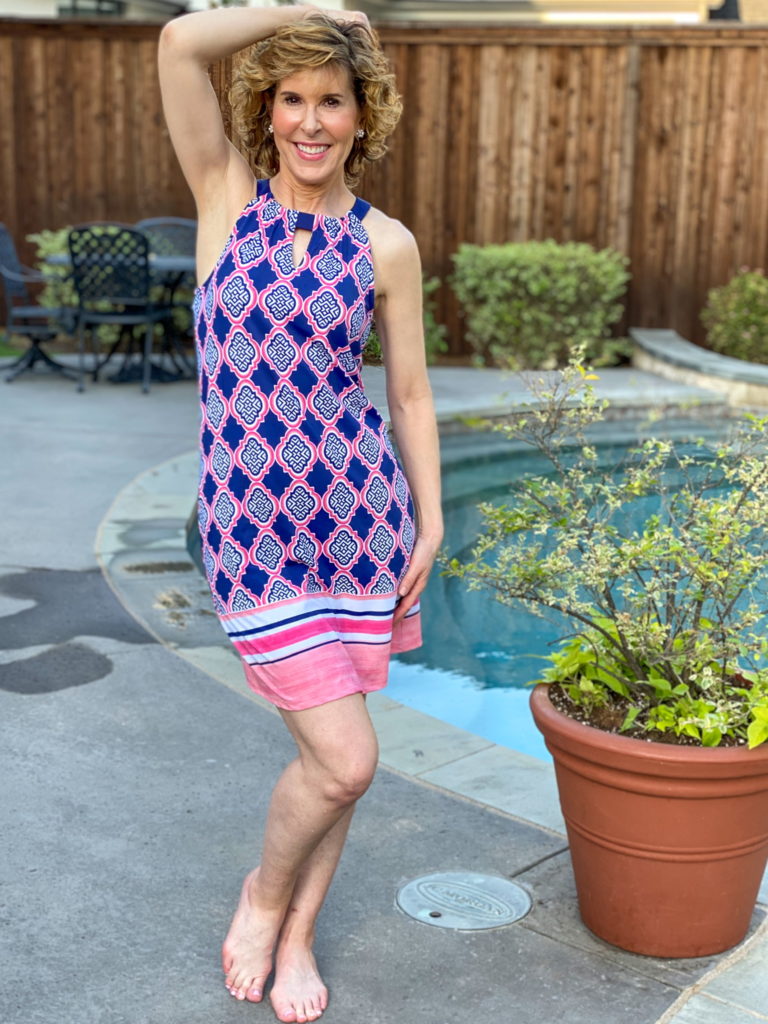
My Sun Story: Hats
It’s estimated that 90% of skin aging is caused by the sun! That makes a hat your sun protection, anti-aging BFF. When it comes to hats, remember, the bigger the brim, the safer your skin! Baseball caps, which only cover your forehead and half of your face, leave too much of your face vulnerable to the sun to provide adequate protection.
My Sun Story: UPF Clothing
If you’re serious about sun safety, you’ll want to look for . UPF stands for Ultraviolet Protection Factor, which measures a fabric’s effectiveness against both UVA & UVB light. It blocks 98% of the sun’s UV rays. My choice is always the happy and colorful designs from ! Their mission is to create sun protection that makes women look and feel their best. The brand was started by two friends who were working and living in Manhattan. When one of them was diagnosed with melanoma at age 26, they were shocked to find out that their clothing wasn’t protecting them as well as they’d believed. Not wanting women to have to choose between fashion & function, they set out to create a new trend: sun protection that women would actually want to wear. They use only the highest-rated UPF & most luxurious fabrics, and their designs are joyful and bright.
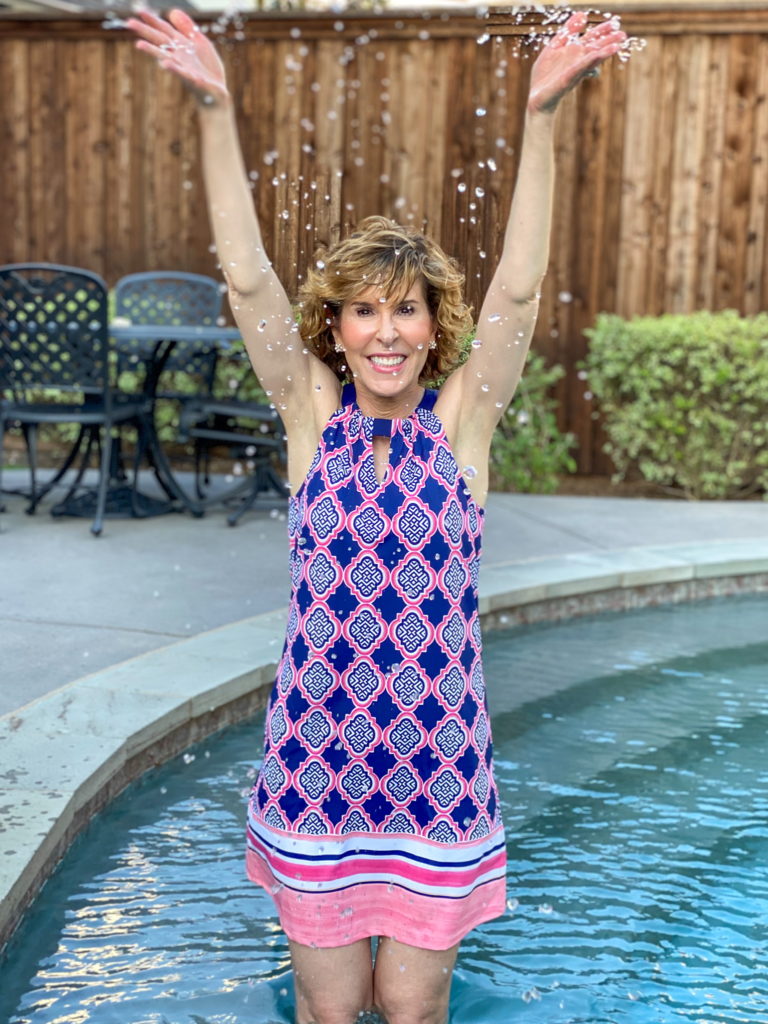
UPF 50+ Navy Geo Sleeveless Shift Dress (gifted)| |
I have a thing about navy and pink together, so when I saw this dress, it was pretty much love at first sight! The shift style means it flows over your curves in such a flattering way, and this neckline is fantastic on everyone! Best of all it’s made of UPF 50+ fabric, to keep you safe.
I first discovered when I saw someone in one of their dresses! I loved the joyful use of color, and until I checked out their website, I had no idea that their designs were all UPF 50+ and that they were a brand that was as committed to sun safety as I am! In honor of skin cancer awareness month, my sweet, sun-sensitive friends at are offering $20 off a $100 + purchase with the code EMPTYNESTBLESSED. That’s a 20% discount, y’all! Be sure to check them out and I know you’ll fall in love with their happy designs just like I did!
I made a video for IGTV and posted it on my YouTube Channel! It covers some of the information that I shared in this post! Please feel free to share it with others, and I’d love it if you’d subscribe to my YouTube Channel!
Are you sun-sensitive? Have you had an experience with melanoma? What’s your sun story?
Feel free to Pin this post for future reference and share it with others using the social media icons below.
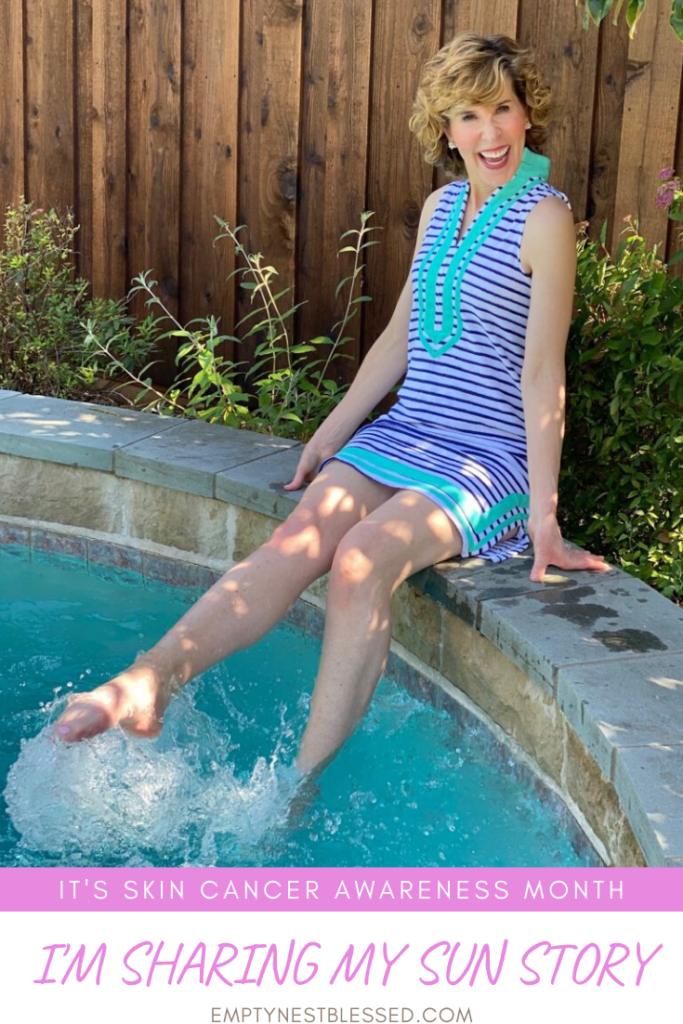






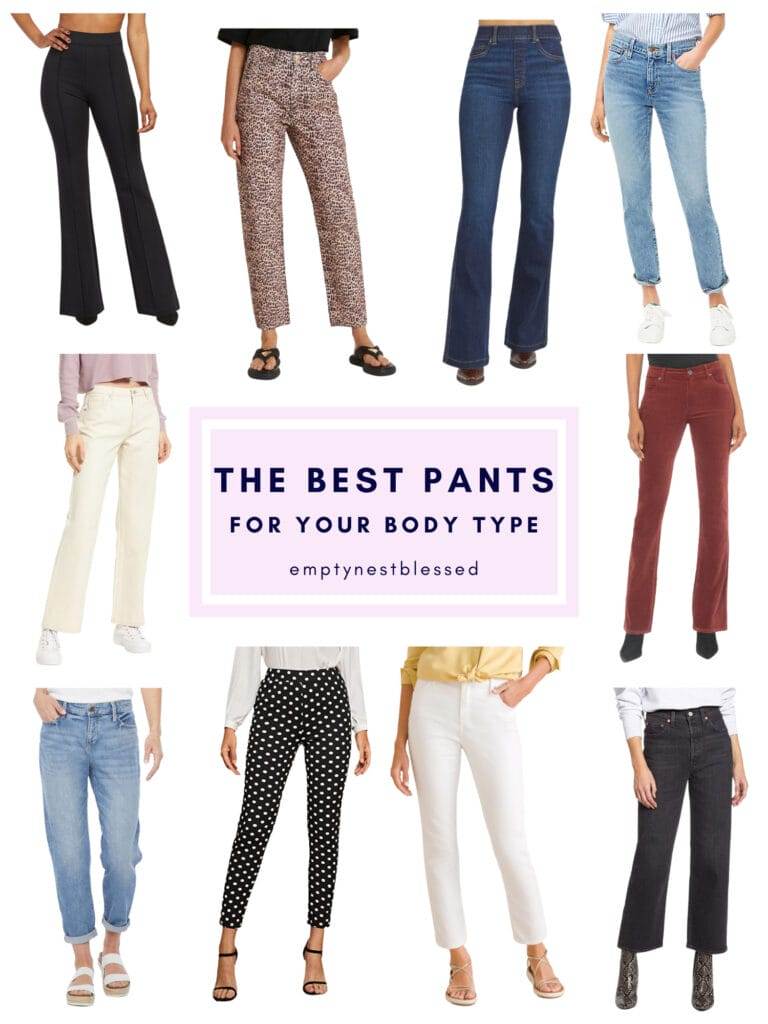
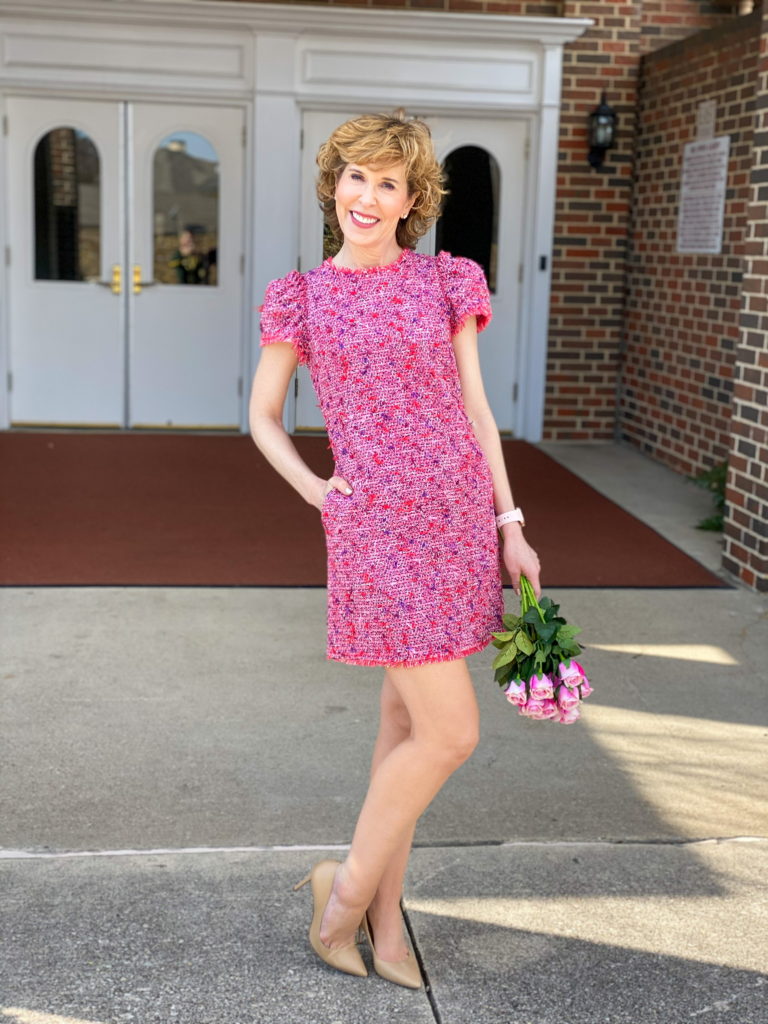

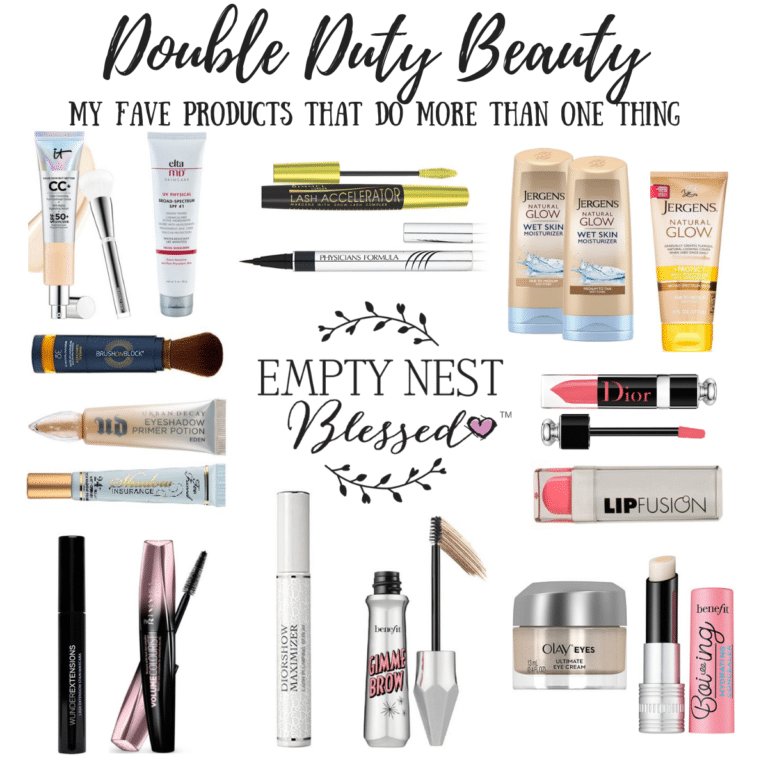
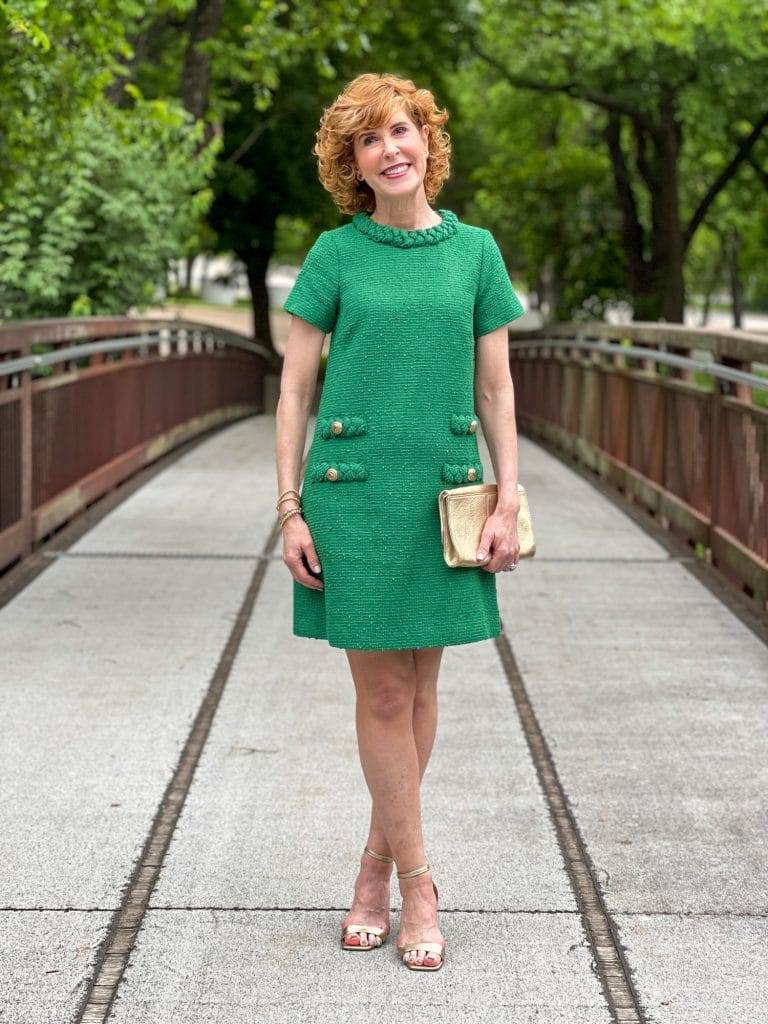
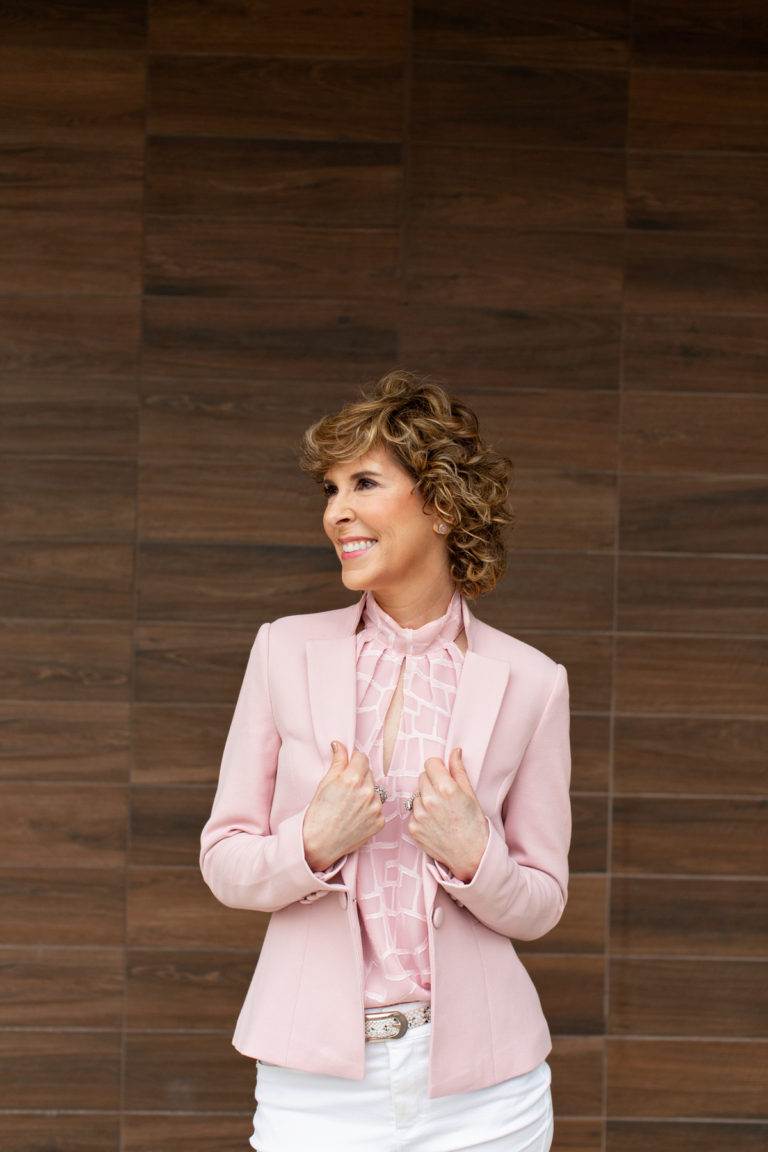

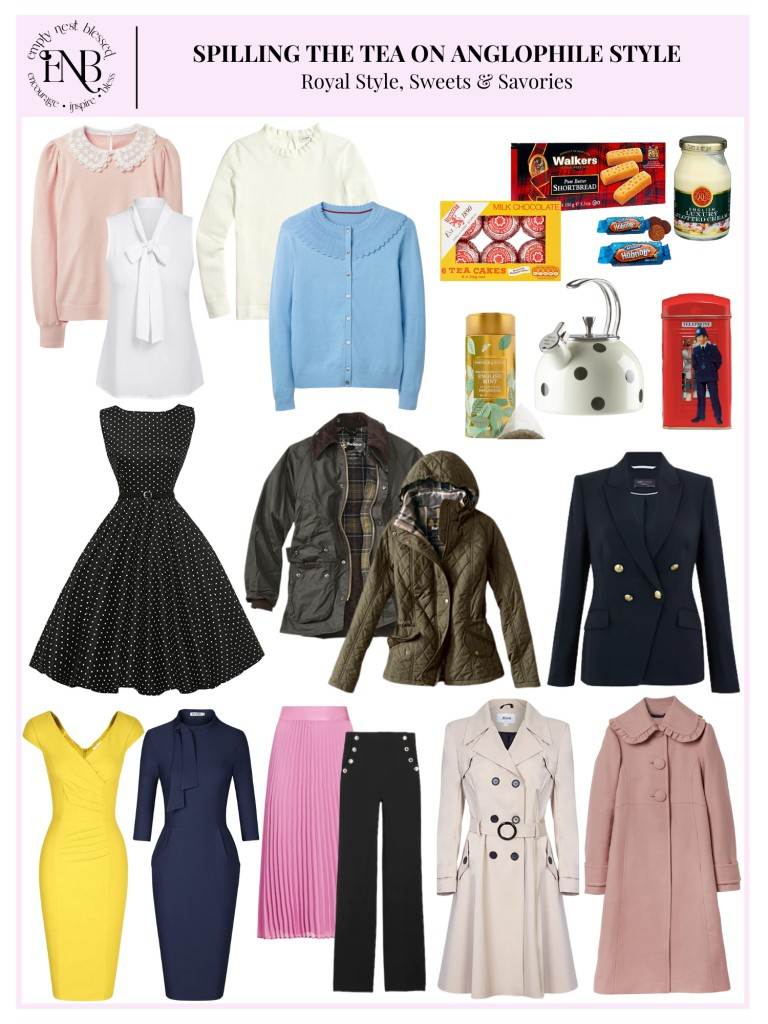



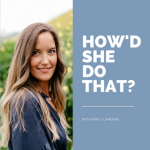

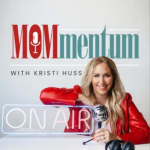

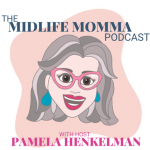

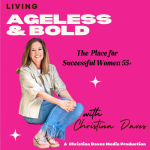

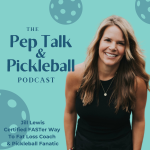
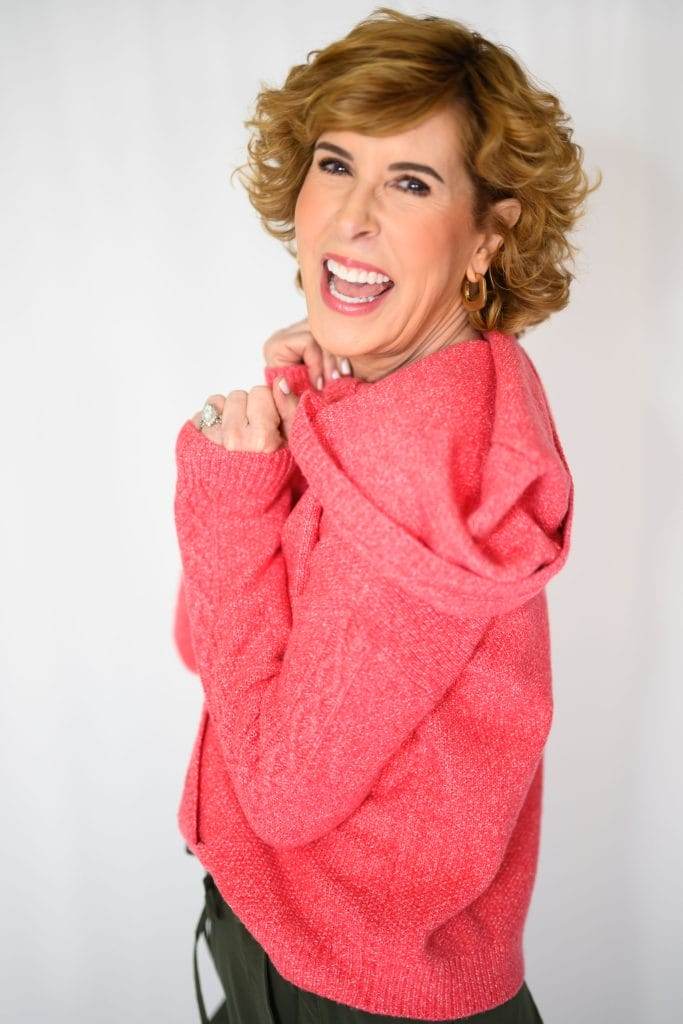

Last August, my then 20 year old daughter had a wide local incision plus 2 lymph nodes removed for a stage 1b melanoma. A freckle/mole on her lower leg (she had since elementary school) got bigger and darker so she had it removed and biopsied. She is pale, not in the sun much and never had used a tanning bed. She had very few sunburns growing up. This was very unsettling even though all margins and lymph nodes came back clear. Pay attention and get skin checks!
Jamie,
Such good advice! Thank you for sharing. I am so sorry to hear that. Melanoma is the dealiest cancer for young women ages 29-34. Yikes! These are our daughters. You may have saved a life by sharing your story today. Thank you so much. Love to you and your daughter!
xoxo
Suzy
My father passed of melanoma that had metastasized to the liver, brain and lungs. This was in October 2017.
My father had had skin cancer on and off for over 30+ years. He had survived a heart attack when he was out of the country in 2010 and then a year and a half later he survived a stroke. He went for skin cancer screenings all the time. He had a number of MOHS procedures. On the Friday before Labor Day 2017 I made a statement to my mother that my father seemed a bit different. A younger sister (who is a nurse) and lives in the same town as my parents made the same comment to my mother. The following Tuesday the doctor sent him to the hospital for tests and well in four short weeks we lost my father. He was the husband to my mom for 56 yrs, the father of 7 and the grandfather to 12. He was loved by so many who knew him. I know I am saying this as his daughter and as the oldest of his 7 but I still miss him. He did everything right. He did not go out in the sun without a jacket or a hat. Not even a year after his passing I went for my yearly body scan and it was basal cell. I was very concerned as I wear a compression garment due to a DVT on that leg. I had a procedure and the next time I had a scan things were fine. Now I was supposed to have gotten a scan during this event but I have had to keep putting off. So hopefully when I am able to go (scheduled for next month–hopefully my state will be open then and I will be able to go), I hope that I will still be fine.
Maureen,
I am so sorry to hear about your precious daddy! He sounds like such a wonderful man. Thank you for sharing your story with us.
I hope you’ll be able to get that scan soon and I’m believing that you will be fine! Big (virtual) hugs to you, sweet girl.
xoxo Suzy
Do you use à facial moisturizer with spf too?
Thank you for sharing this blog about your Sun Story, It’s inspirational and awareness of Skin cancer.
Fitoru,
I’m so glad you found it helpful!
Suzy